Ok, so we know what sparrows look like, or ‘Captain Jacks’ as hubbie calls them, and blackbirds are also pretty obvious, unless they’re female. They’re both common visitors to our garden, along with tits of varying design.
Beyond that however, we’re both pretty ignorant when it comes to birds.
They never sit still enough for proper identification, and aren’t nearly as fascinating as animals. Add in the fact that we’re frequently kept awake by squabbling starlings nesting in our house eaves and the spritely house martins raising their young right outside our bedroom window, and you don’t really have the recipie for avid twitchers.
So why, on our travels, do we so often end up going bird watching?
Sure, foreign birds are more exotic, but really we haven’t a clue and still we find ourselves pretending to be enthralled by sighting this and that, and make what we think are appreciative noises down the telescope set up especially for these avid English bird watchers.
Here follows two examples of our poor attempts at bird appreciation…
Guatemala
Our first twitching experience was on Lake Petén Itzá in the Petén region of Guatemala. We were staying at the delightful Casa de Don David in the village of El Remate. It was pouring with rain and we’d already done the Mayan ruins at Tikal and Yaxha, as well as horse riding, zip-wiring and wobbling along canopy bridges pretending to be Tarzan. Perhaps we just wanted something else to experience, so we enlisted the brilliant Lou Simonich to take us out in his lancha to spot some birds. He was in his element, pointing out various species, most of which I now forget, completely ignorant of the beating rain. Hubbie and I huddled on the bench, soggy to the bone despite waterproof jackets (useless in the tropics) and trying desperately to act like the tough outdoor types we think we are. The jaunt was at least something different.
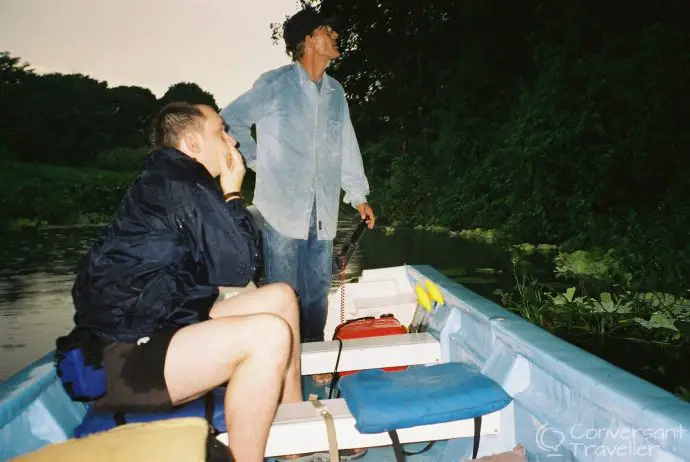
Lou turned out to be a fascinating chap and a joy to spend the evening with – he’s a mine of information about the area, and has a personal history that could keep you entertained for hours. An American hippie who protested against the Vietnam War, he finally found his way to the shores of Lago Petén Itzá and never went back. Now running tours by boat, canoe and bike, he’s a bit of an institution and definitely worth looking up if you’re out that way. Just ask at the guest house where you’re staying, they’ll know exactly who you’re after.
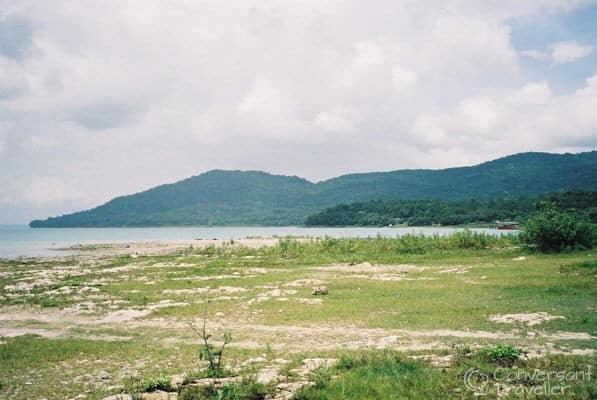
Despite all this however, we still weren’t mesmerized by the birds. In fact it was far more exciting spotting the raised heads of baby turtles in the two rivers on the south side of the lake, and shining our torches into the gloom to try and locate crocodiles (we’d swum in the lake earlier but fortunately still had all our toes). It was rather fun being out on the lake by ourselves in the fading light, totally drenched yet warm, with the only sound being water lapping against the boat, and occasional murmurs from Lou when he’d spotted something interesting. Very relaxing couple of hours surrounded by beauty and in great company, even if we were still ignorant when it came to the birds.
Cambodia
Our Cambodian birding experience was a little more bizarre. After a couple of sweltering days tramping around the magnificent temples of Angkor Wat, we were ready for something a little cooler. So we opted for a trip with Tara Boat Tours out on the vast lake near Siem Reap – Tonle Sap. More like a sea really, it’s so huge.
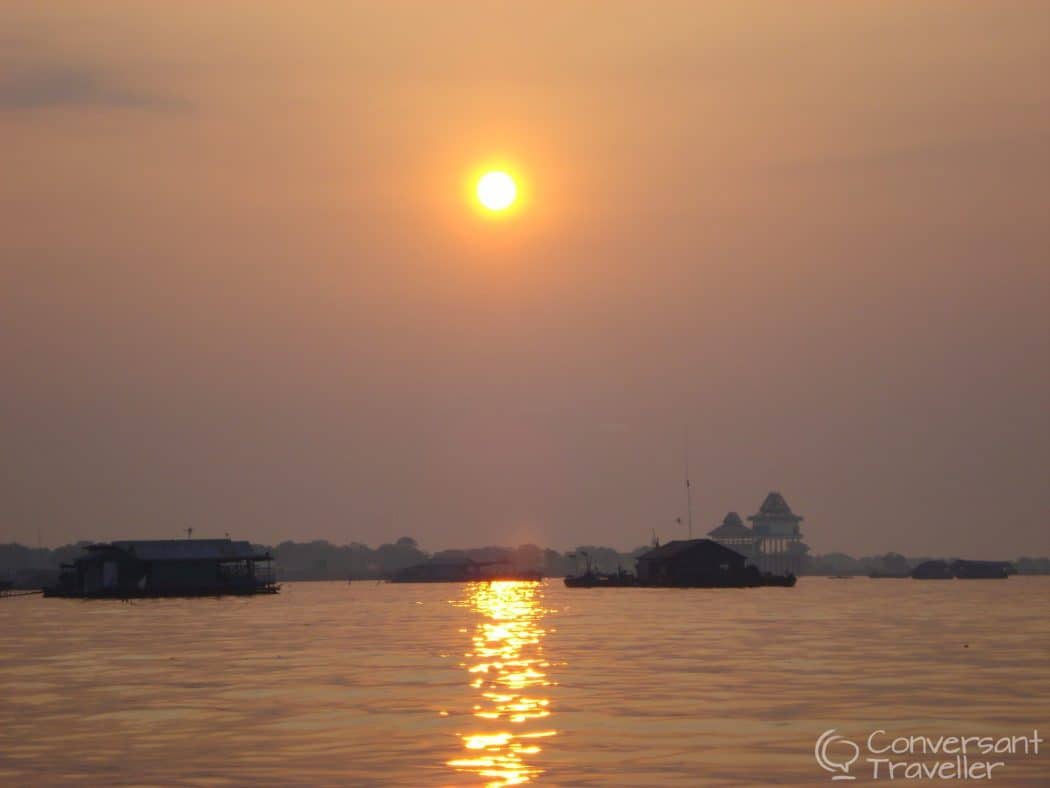
The guide we hired had mentioned something about the Prek Toal Biosphere Reserve being good for birds, which we thought might be an interesting bonus to the excursion. We left very early in the morning, enjoying the sunrise and the floating markets and villages of the Vietnamese immigrants who had come to make their living from the lake. An interesting experience, though it felt very intrusive at times, and I wasn’t keen on the ‘environmental’ centre showcasing captive reptiles and the like, not really something I agree with. Yet when in Rome…
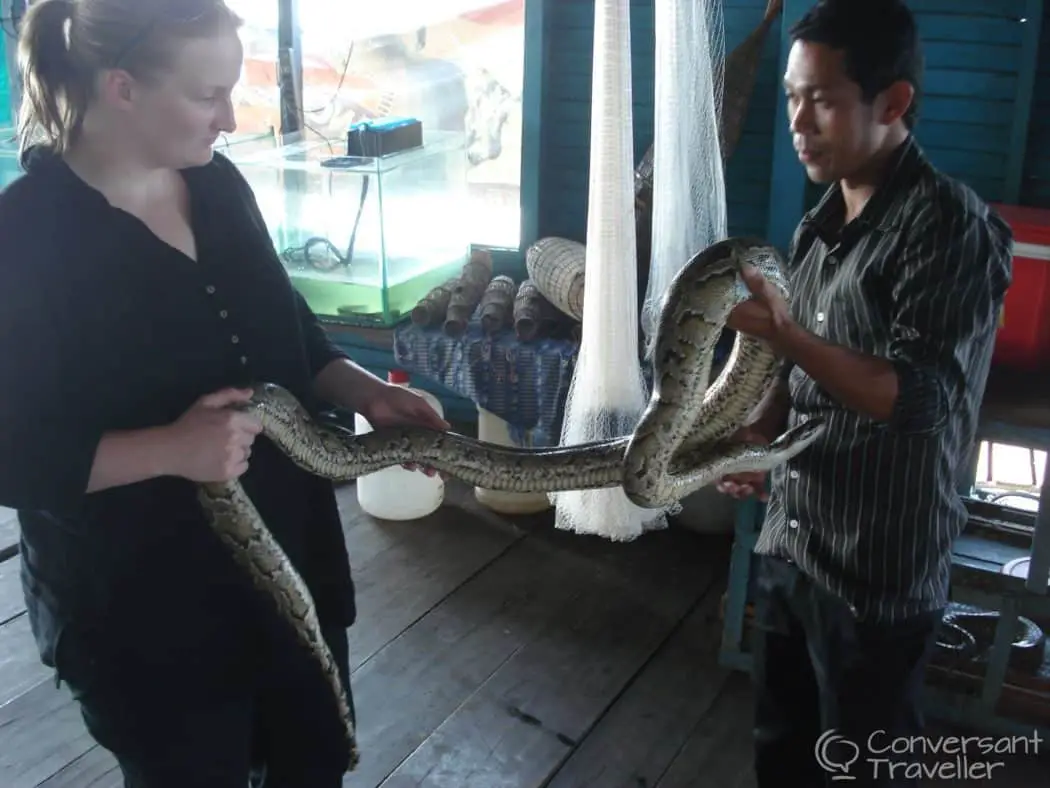
I enjoyed seeing the children paddling their boat to school…
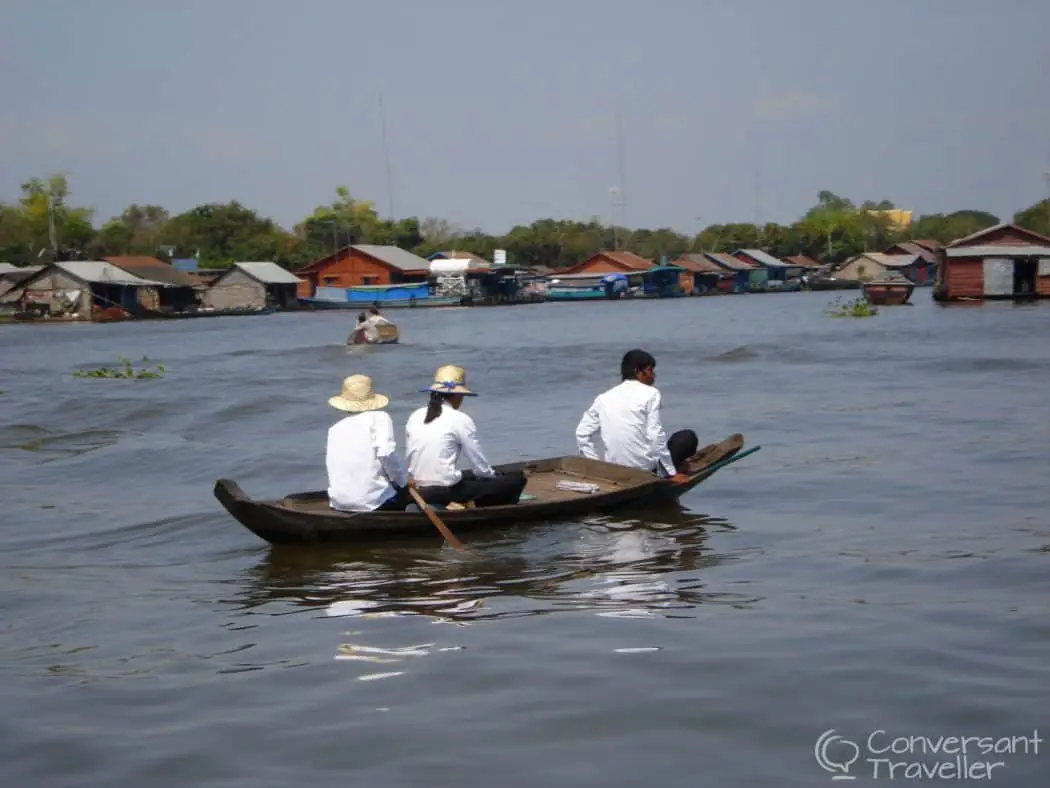
…and hubbie thought the local police station was much more fun than the one he’s used to.
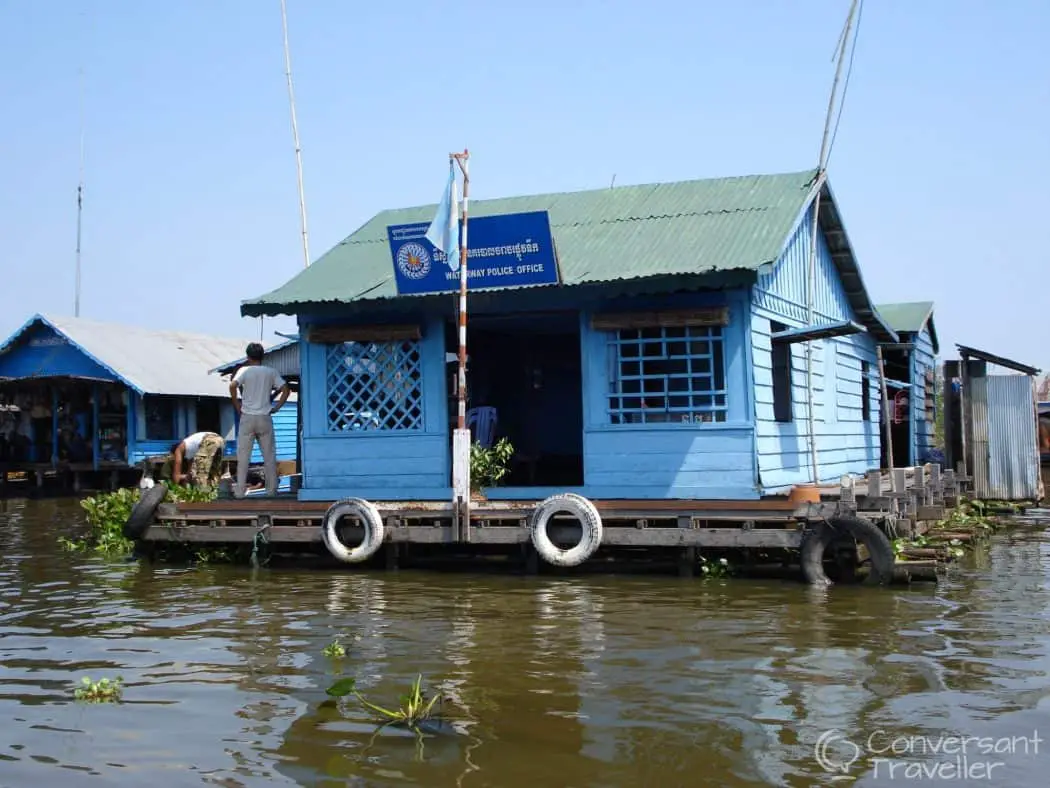
However, it all went slightly downhill from here.
Our guide was one of those cocky types who thinks he is charming, and was constantly admiring his own reflection, whether in the car wing mirror or the lake itself. Once on board the rickety boat he showed us to a couple of solid wooden benches whilst he himself retired to the solo hammock at the back and promptly went to sleep. The taxi driver also came aboard, but didn’t say a word or even acknowledge us until we were back in his taxi at the end of the day. I got the impression not many people do this tour (perhaps there is a reason for this!), so it would be a different day out for all involved.
As the shore faded into the distance we realised that the lake was so huge you could be in the middle and not see land in any direction (it is the biggest lake in South East Asia!). Then suddenly out of nowhere a stilted fisherman’s hut would appear, with miles of net fencing to trap the fish. The fishermen can spend days out here, a very lonely existence. We kept having to stop at the fences and haul open the wooden gates to allow the boat to pass through this novel maze. Probably the best bit of the trip.
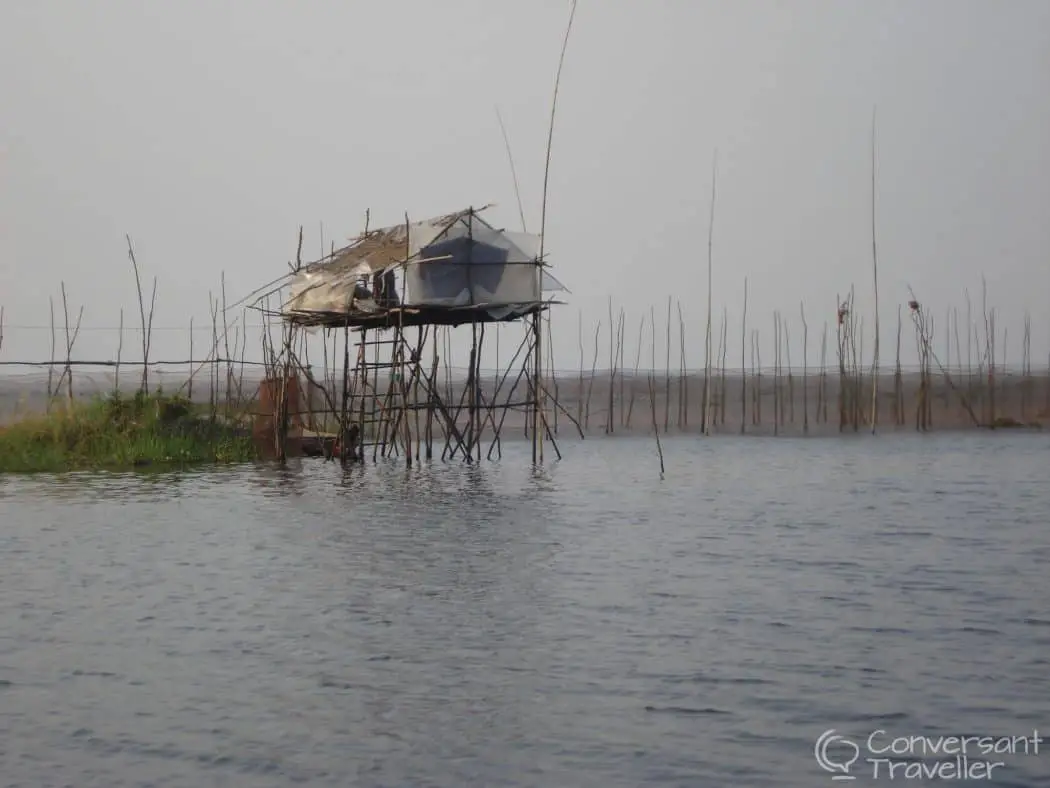
An hour into the voyage hubbie began to wonder at the worrying amount of water seeping through the bottom of the boat. We soon discovered that between the wooden boards we could actually see the lake passing by beneath us and silently began noting the locations of the fishing huts for when we sank. It would be a long swim. I was slightly more concerned about my breakfast which was just begging to make an unscheduled appearance, and we clearly weren’t near any public conveniences. Our guide snoozed on and we suffered in silence (the captain being a rather brusque type who clearly felt ferrying tourists around was rather beneath him), our bums now totally numb.
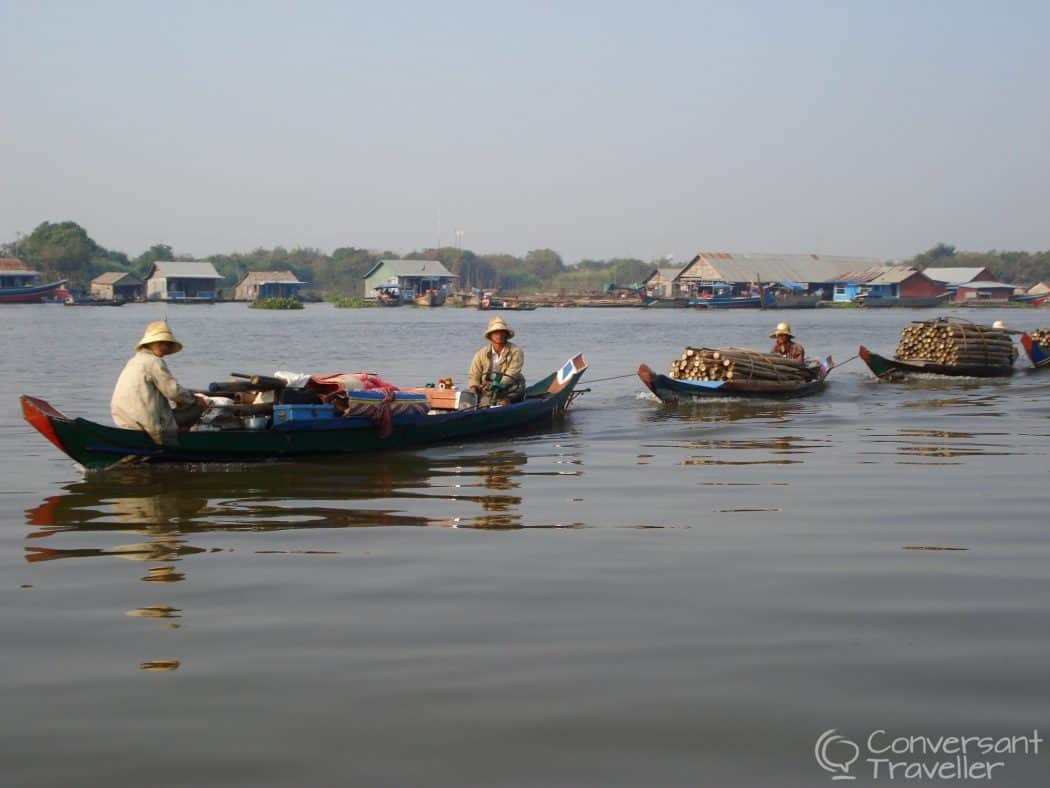
A couple of hours later we finally arrived at a Cambodian floating village, and delightedly leapt off the floating bone-shaker onto an equally ramshackle pontoon. Not entirely sure what was going on, we took the opportunity to visit the toilet before being taken to ‘admire’ the cages of crocodiles under our feet. Croc farming on the lake is a thriving business and the animals are sold for a significant profit to countries like Thailand, no doubt for making handbags. Our guide returned with a permit in his hand, and we all piled back onto the boat, this time with an extra chap to whom we weren’t introduced. No idea to this day who he was or why he joined us.
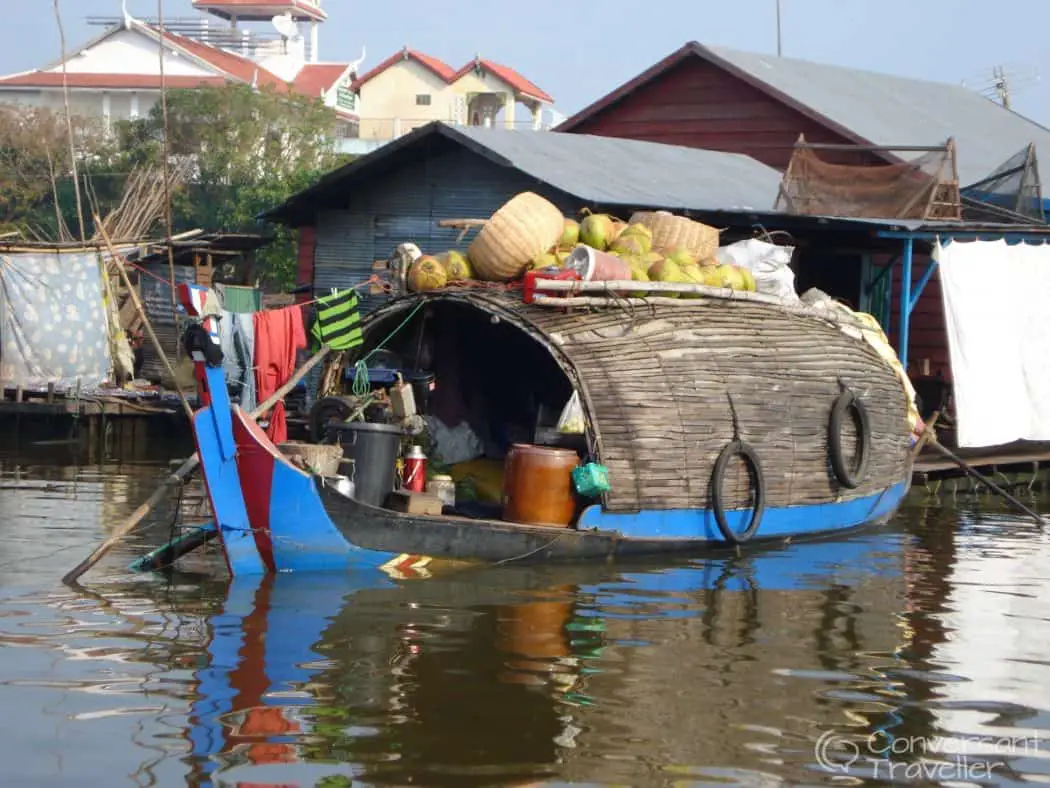
We finally reached the Prek Toal Biosphere Reserve after another half hour or so in the boat, and came across a random floating platform in the middle of nowhere, with a solitary bloke was squatting on his haunches. There was no vessel around, and nothing but reeds and water for miles, so goodness knows how he got there, or how long he’d been waiting. Anyway, he of course duly piled into the boat (again without a word to us) and off we delved into the reeds.
Our guide pointed out a few birds including some roosting in a tree some way off. He thrust a laminated sheet at us with pictures of birds on for identification purposes but unfortunately even with binoculars they were just dark specks. He clearly didn’t have a clue. We felt we had to keep admiring them through our binoclulars, making seemingly informed comments to each other, only to be blankly stared at by the men, who were now 5 in total.
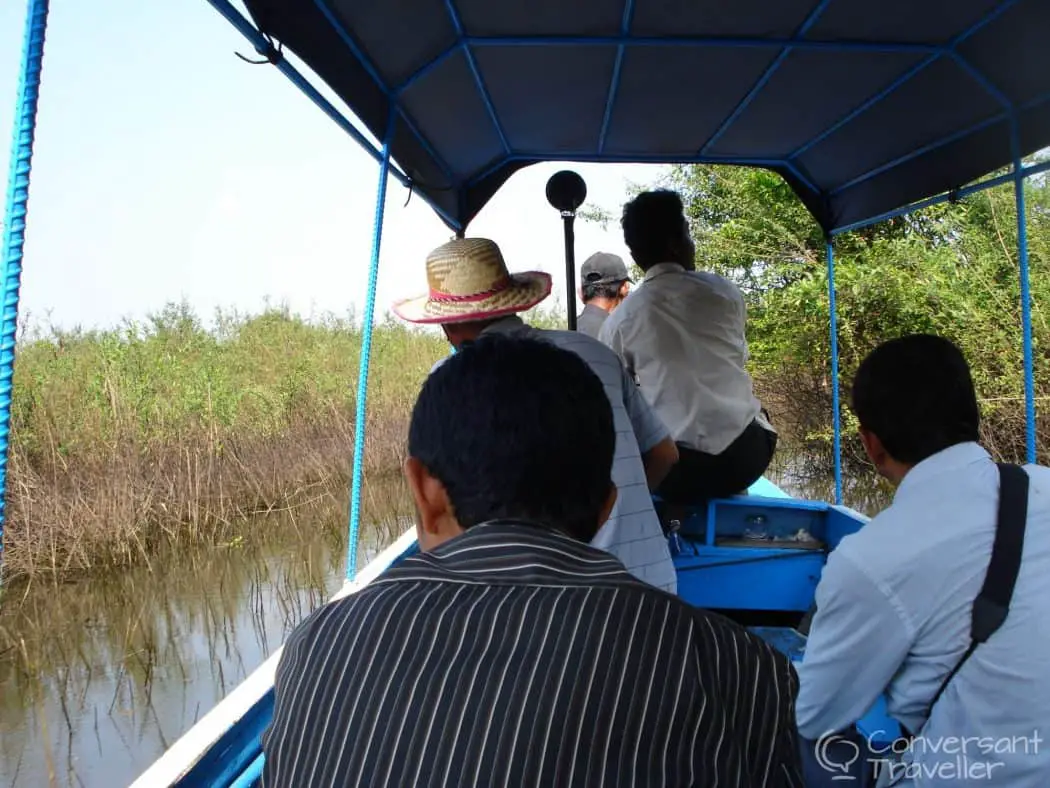
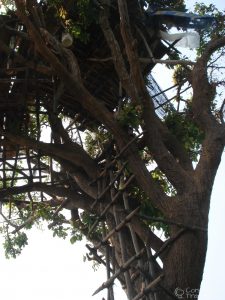
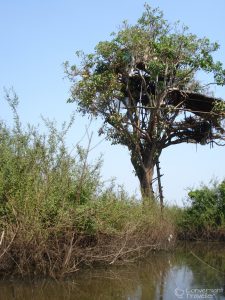
Suddenly up ahead loomed a tree, perched in which was a platform of sorts with a dubious looking wooden ladder leading up to it. So this was the final destination, after about 4 hours of pure torture. A tree.
Up we scrambled, following the guide and the bloke from the platform who now produced an impressive telescope from nowhere.
As he was setting it up a colossal spider fell on me from above, and my instant reaction was to flick it violently away from me. I don’t do spiders. Unfortunately it pinged across the treehouse and landed in the lap telescope man. He didn’t look too impressed and just stared at me. He still hadn’t uttered a single word.
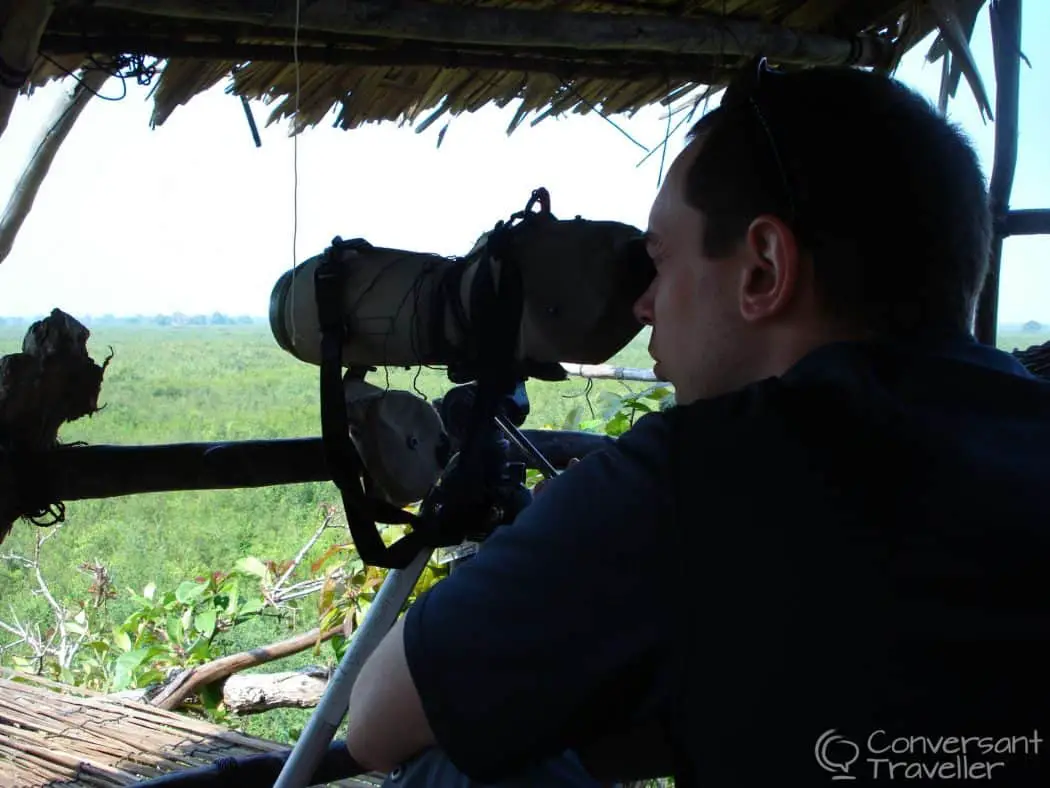
It became apparent that hubbie and I were now to take turns at viewing the birdlife through the lens, whilst the 2 men just sat and watched us. Feeling ridiculous I went first. There was nothing to see, but fearing I was just suffering from inexperience I made all the right noises before thankfully passing it on to a bemused hubbie. He followed suit and this went on for about 10 minutes (although it seemed more like an hour). Finally I plucked up the courage to ask where all the birds were. To which the guide replied
“Oh there aren’t any at this time of year, they’ve all migrated for the season”.
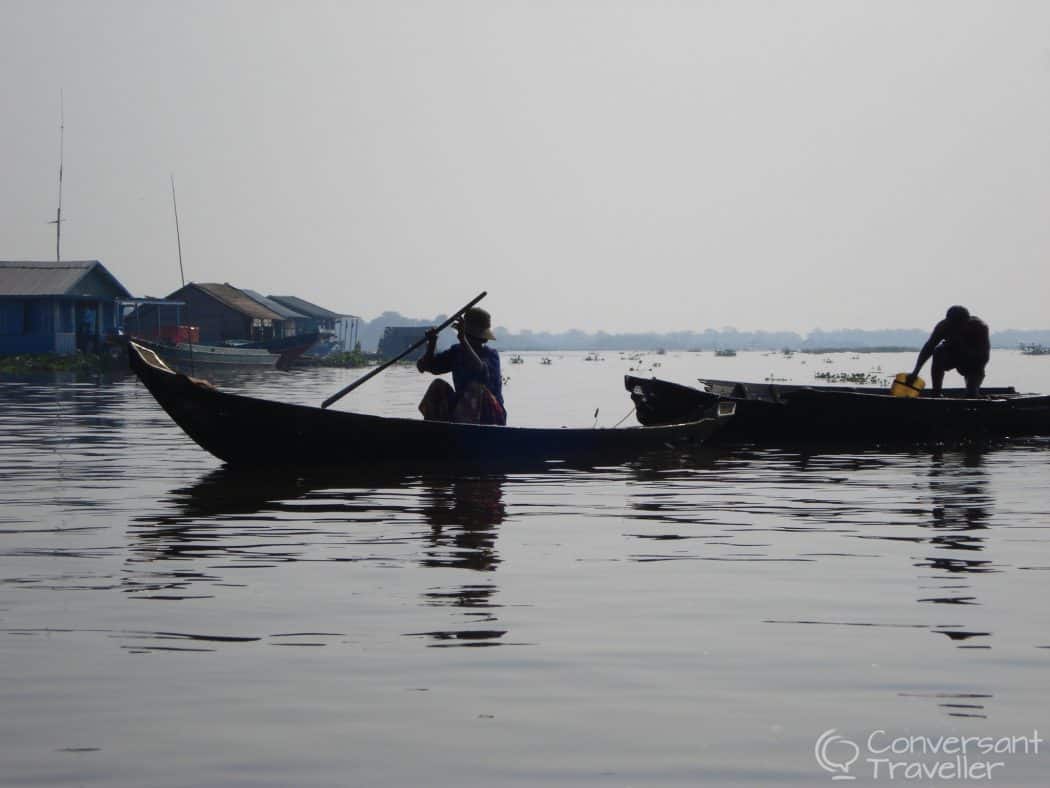
Despite these and other birding experiences, we still can’t quite get the hang of this, to extent that we even managed to be in Sabah during the Borneo Bird Festival and didn’t see so much as a sparrow! Feeling we ought to remedy the situation since bird watching seems to have become a common theme in our travels, we recently purchased the entire set of Collins Field Guides, including one on birds. Our identification skills were put to the test during a week on the Applecross Peninsula staying at the delightful and remote Cottage by the Shore at Colliegille, where birds were frequent visitors to the shoreline and feeders directly outside the window. We successfully identified all manner of sea birds, (including oyster catchers), as well as Cole Tits (which we rather liked since we’re Coles too!). Hubbie even identified a ‘posh sparrow’, that later turned out to be a female Meadow Pipit, which had never been seen by the cottage owners in all their years living nearby. Result. I on the other hand managed to identify a Red-Backed Shrike during a recent wild camping trip in the Lake District, only to discover that this is in fact a virtually extinct species, and therefore unlikely to have been posing for us in the valley.
We still have some way to go but are really starting to enjoy our new hobby.

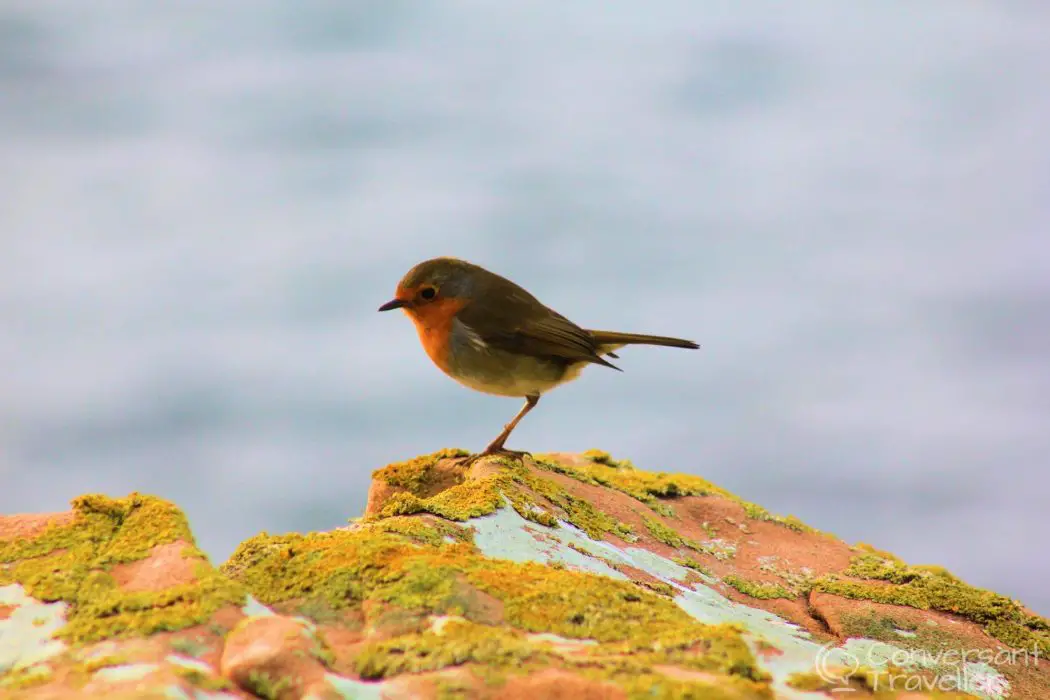
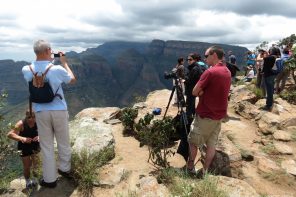
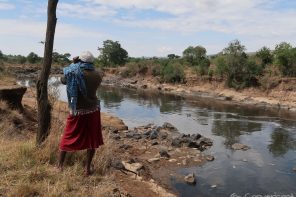
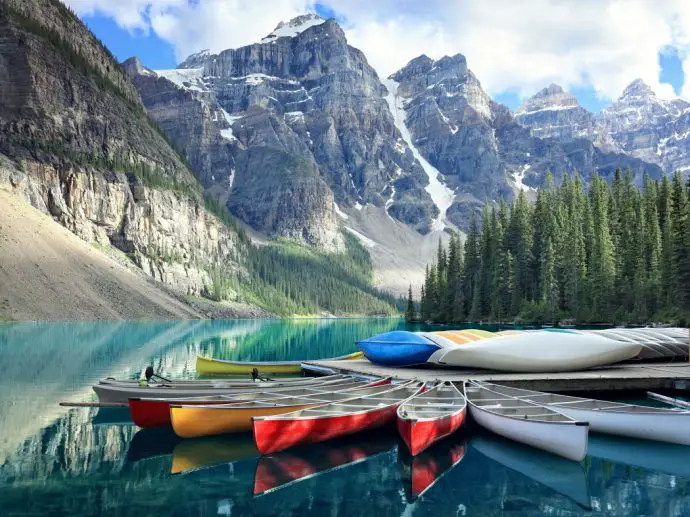
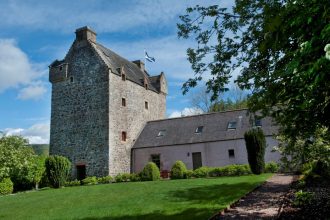
Haha this is so Asia! To go on a tour and then they say “Oh there aren’t any at this time of year, they’ve all migrated for the season”. You have to laugh about it ><
We do now, though we probably felt like crying at the time